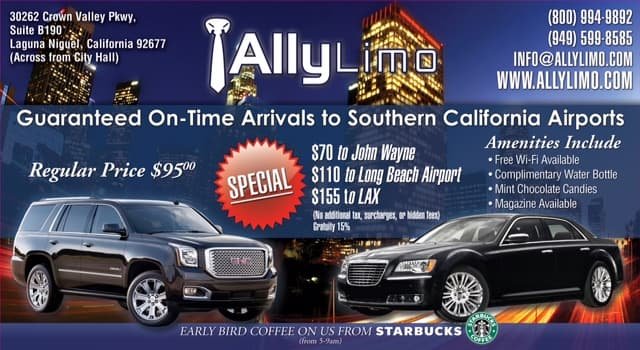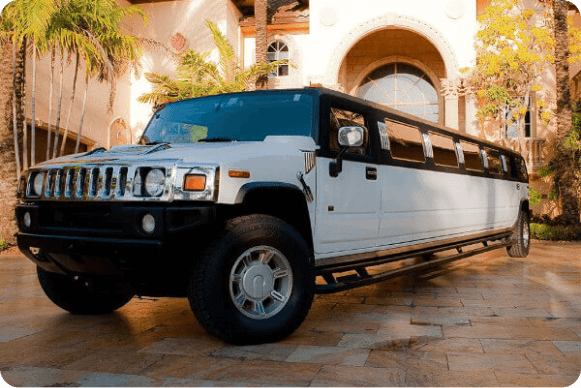Starting a limo service may seem like a glamorous venture, but did you know that it can also come with a hefty price tag? From the luxurious vehicles to the necessary permits and insurances, the costs can quickly add up. So, just how much does it cost to start a limo service?
When considering the costs of starting a limo service, it’s important to factor in various elements. These include acquiring high-quality vehicles, obtaining the necessary licenses and permits, hiring professional chauffeurs, and investing in effective marketing strategies. According to industry estimates, the initial investment for a small limo service can range anywhere from $30,000 to $150,000. This significant investment is crucial in establishing a reputable and successful limo service that meets customer expectations and stands out in a competitive market.

How Much Does It Cost to Start a Limo Service?
Starting a limo service can be an exciting venture, but it’s essential to understand the costs involved. From purchasing vehicles to marketing your business, there are several expenses to consider. In this article, we will explore the various costs associated with starting a limo service and provide you with valuable insights to help you plan and budget effectively.
The Cost of Limo Vehicles
One of the most significant expenses when starting a limo service is purchasing the vehicles. The cost of a limo can vary greatly depending on the make, model, and condition. Used limos can range from $20,000 to $100,000, while brand new luxury models can cost upwards of $300,000. It’s important to consider the type of clientele you want to attract and choose vehicles that align with their expectations.
When budgeting for vehicles, you should also factor in insurance costs. Limo insurance can be expensive due to the high value and specialized nature of the vehicles. Depending on your location and the type of coverage you choose, insurance premiums can range from $5,000 to $15,000 per year per vehicle.
In addition to the cost of the vehicles themselves, you’ll also need to budget for regular maintenance and repairs. Limos require regular servicing to ensure their safety and reliability. Routine maintenance costs can vary depending on the age and condition of the vehicles, but it’s advisable to set aside a budget of at least $2,000 to $5,000 per year per vehicle.
Permits and Licensing Fees
Operating a limo service requires various permits and licenses, which come with their own set of costs. These fees can vary depending on your location and the specific requirements imposed by local authorities. Common permits and licenses include:
- Business license: This is a general permit required for operating any business. The cost can range from $50 to $500 depending on your location.
- Chauffeur’s license: Your drivers will need to obtain chauffeur’s licenses, which usually involve a fee of around $100 to $500 per driver.
- Commercial driver’s license (CDL): If your limo service operates larger vehicles, such as buses or vans, your drivers may need to obtain a CDL. CDL fees typically range from $50 to $200.
- Specialty permits: Depending on your service offerings, you may need additional permits for events, airport pickups, or alcohol transportation. These permits can range from $100 to $500 each.
It’s crucial to research the specific requirements of your location and budget accordingly for these necessary permits and licenses.
Marketing and Advertising
Effective marketing and advertising are essential for attracting customers to your limo service. To create a strong online presence, you’ll need a professional website, search engine optimization (SEO), and social media marketing. The costs of website development can range from $1,000 to $5,000, depending on the complexity and features required.
In addition to your online presence, consider traditional advertising methods such as print ads, billboards, and radio spots. These costs will vary depending on the media outlets you choose and the duration of your ad campaigns. Budgeting approximately $500 to $2,000 per month for marketing and advertising expenses is a good starting point.
Finally, networking is an invaluable marketing tool in the limo service industry. Attending industry events, joining local business organizations, and building relationships with event planners and hotel concierges can help generate referrals and attract high-paying clients. While networking doesn’t have a direct cost, it requires an investment of time and effort.
Staffing and Operational Costs
In addition to the vehicle costs, permits, and marketing expenses, you’ll also need to consider staffing and operational costs. These include:
- Driver salaries: Set aside a budget for paying your drivers. Depending on their experience and qualifications, driver salaries can range from $30,000 to $60,000 per year.
- Office space and utilities: If you plan to have a physical office, you’ll need to budget for rent, utilities, and office supplies. These costs can vary significantly depending on your location.
- Dispatch software: Investing in dispatch software can help streamline your operations and improve efficiency. Costs for this type of software range from $500 to $5,000, depending on the features and scalability.
- Other operating expenses: Don’t forget to account for additional costs such as fuel, vehicle cleaning, maintenance supplies, and administrative expenses. These expenses can add up over time and should be factored into your budget.
It’s important to thoroughly analyze your operational costs and create a detailed budget to ensure you’re prepared for the day-to-day expenses of running a limo service.
Choosing the Right Vehicle Fleet
When starting a limo service, selecting the right vehicle fleet is crucial for attracting customers and providing a high-quality experience. Here are some factors to consider:
Type of Service
Determine the type of service you want to offer. Are you targeting corporate clients, special events, weddings, or airport transfers? Each type of service may have different vehicle requirements. For example, corporate clients may prefer luxury sedans, while special events may call for stretch limos.
Client Preferences
Understand the preferences of your target clientele. Research market trends and consider what vehicles are in demand. For example, if you’re targeting weddings, classic vintage cars may be a popular choice.
Vehicle Features
Consider the features and amenities your vehicles will offer. Wi-Fi, minibars, entertainment systems, and comfortable seating arrangements can enhance the customer experience and justify higher pricing.
Providing Exceptional Customer Service
Customer service plays a vital role in the success of your limo service. Here are some tips to ensure an exceptional customer experience:
Well-Trained Drivers
Invest in comprehensive training programs for your drivers. They should have excellent driving skills, knowledge of the local area, and exceptional customer service etiquette.
Clean and Well-Maintained Vehicles
Maintain a strict cleaning and maintenance schedule for your vehicles. Ensure they are in top condition and provide a luxurious and comfortable experience for your clients.
Timeliness and Reliability
Always prioritize punctuality and reliability. Your clients rely on your service to arrive on time and give them peace of mind. Respect their schedules and deliver an exceptional experience.
Conclusion
Starting a limo service requires careful planning and budgeting to ensure the success of your business. From purchasing vehicles and obtaining permits to marketing your services and providing exceptional customer service, every aspect plays a crucial role in building a reputable and profitable limo service. By understanding the costs involved and implementing effective strategies, you can set yourself up for success in this lucrative industry.
Key Takeaways: How Much Does It Cost to Start a Limo Service?
- Starting a limo service requires a substantial initial investment for purchasing vehicles, insurance, licenses, and marketing.
- The cost of purchasing a new limousine can range from $50,000 to $300,000, depending on the model and features.
- Additional expenses include insurance coverage, which can cost around $300 to $800 per month per vehicle.
- Obtaining the necessary licenses and permits may cost around $500 to $1,500, depending on your location.
- Marketing and advertising expenses, such as website development and online promotions, can vary but are essential for attracting customers.
English Translation: Frequently Asked Questions
Starting a limo service can be an exciting venture, but it’s important to understand the costs involved. In this section, we’ll answer some common questions about the expenses associated with starting a limo service.
1. How much does it cost to purchase a limousine for a new service?
The cost of a new limousine can vary depending on the make, model, and features you choose. On average, you can expect to spend anywhere from $50,000 to $150,000 for a new limousine. Keep in mind that there may be additional costs for customization, such as adding extra amenities or branding your vehicle.
If purchasing a brand new limousine is not within your budget, you may also consider buying a used limousine. Used limos can range from $20,000 to $80,000, depending on their condition and age. However, it’s essential to thoroughly inspect any used limo and consider potential maintenance costs.
2. What are the typical insurance costs for a limo service?
Insurance is a crucial aspect of running a limo service, as it protects you from potential liabilities. The cost of insurance for a limo service can vary based on factors such as the value of your vehicles, coverage limits, and your operating location. On average, you can expect to pay anywhere from $5,000 to $20,000 per year for commercial auto insurance for a small fleet of limousines.
It’s recommended to work with an insurance agent who specializes in commercial auto insurance to get accurate quotes tailored to your specific needs. They can help you understand the coverage options and any additional insurances required for your limo service, such as general liability or workers’ compensation insurance.
3. What are the licensing and permit costs for a limo service?
The licensing and permit costs for a limo service can vary depending on your location and the specific requirements set by your local authorities. To operate legally, you will likely need a commercial driver’s license (CDL) and proper business licenses and permits.
Obtaining a CDL can cost several hundred dollars in fees and usually requires passing written and driving tests. Business licenses and permits can range from a few hundred to a few thousand dollars, depending on your location and the specific licenses required. It’s crucial to research the requirements in your area and budget accordingly for these costs.
4. What are the marketing and advertising expenses for a limo service?
To attract customers, you’ll need to invest in marketing and advertising efforts. The cost of marketing for a limo service can vary greatly depending on your marketing strategy and desired reach. Common marketing expenses for a limo service include creating a professional website, online advertising, print materials, and networking events.
It’s advisable to set aside a budget for ongoing marketing activities to ensure a consistent flow of customers. Depending on the scale of your marketing efforts, you can expect to spend anywhere from a few hundred to a few thousand dollars per month on marketing and advertising for your limo service.
5. What are the maintenance and operating costs for a limo service?
Maintaining and operating a limo service involves various costs, including fuel, vehicle maintenance, and driver wages. Fuel costs are dependent on factors such as the number of trips and distance traveled. On average, a limo service can spend anywhere from $5,000 to $15,000 per year on fuel expenses.
Vehicle maintenance costs include regular servicing, repairs, and tire replacements. These expenses can vary based on the condition of your vehicles and the number of miles driven. It’s important to establish a preventive maintenance schedule and set aside funds for unexpected repairs.
In addition to fuel and maintenance, you’ll also need to budget for driver wages. The amount you pay drivers can depend on factors such as experience, location, and hours worked. It’s essential to consider fair wages to attract and retain skilled drivers, as they play a vital role in providing quality service.






